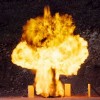
ComDust Group Wants Fire Input in OSHA's Standard
Some members of the LinkedIn Combustible Dust Policy Institute Group are concerned that the fire service may not be involved in discussions as the proposed standard is being developed.
Members of the LinkedIn Combustible Dust Policy Institute Group are sharing their opinions of what the upcoming OSHA combustible standard may require, based on the agency’s May 13 expert forum. Brian Edwards of Conversion Technology Inc., an Atlanta EH&S and energy consulting firm, posted a detailed summary of the forum at the CTI blog and shared it with the group, asking its members to discuss it.
John Astad, the institute’s director and a frequent participant in the group’s discussions, is particularly concerned that the fire service appears not to be involved in the OSHA discussions. He posted a poll question asking the 527 members whether they believe fire marshals and fire chiefs have subject-matter expertise on combustible dust-related fires, which are frequently precursor events to combustible dust-related explosions, according to Astad.
"According to media accounts, over 80% of ComDust incidents are fires," Astad wrote May 21. "In many instances ComDust fires are precursors to eventual catastrophic secondary combustible dust explosions. Currently, the U.S. Fire Administration in addition to fire service professionals that respond to ComDust fires have no involvement in stakeholder input regarding the OSHA Combustible Dust rulemaking process. I feel it is important that the entire complex ComDust fire and explosion workplace hazard situation be addressed in the rulemaking process utilizing a diverse spectrum of subject matter experts and not solelya small select group of special interests."
In his summary of the forum, Edwards says the panel supported having the OSHA standard cover all facilities that handle a significant amount of combustible dust, regardless of facility size, and also supported requiring hazard/risk assessments by covered facilities. The experts supported requiring some engineering controls retroactively while giving facilities some leeway in which controls they require.